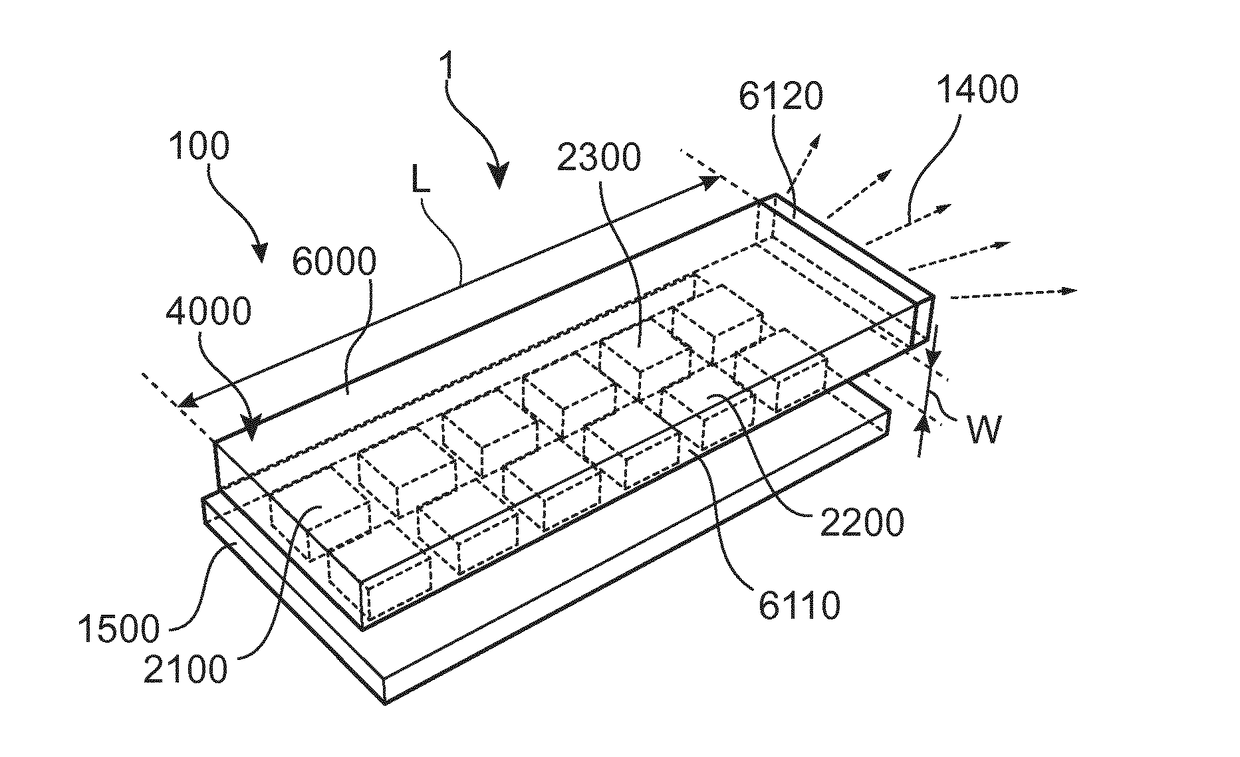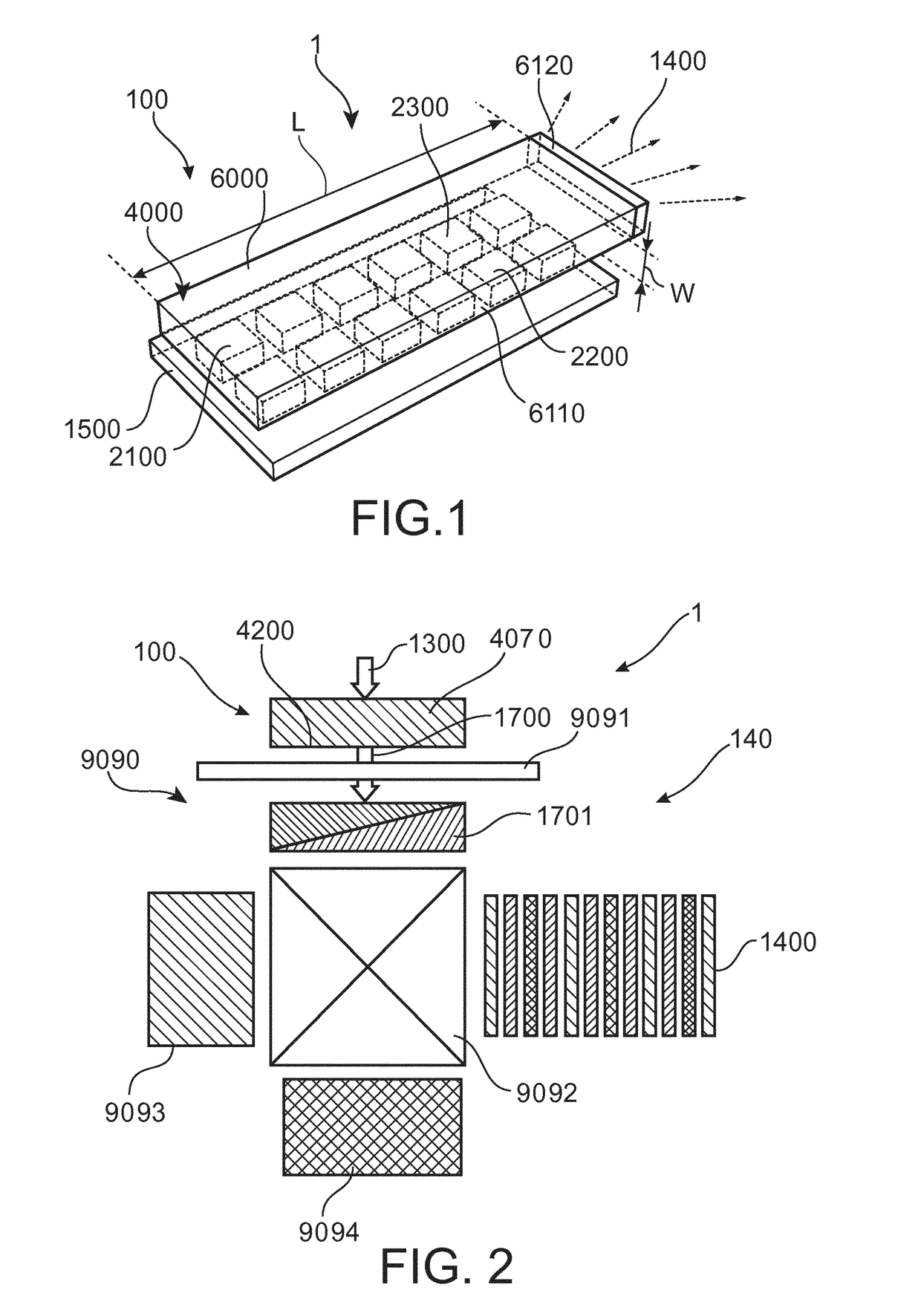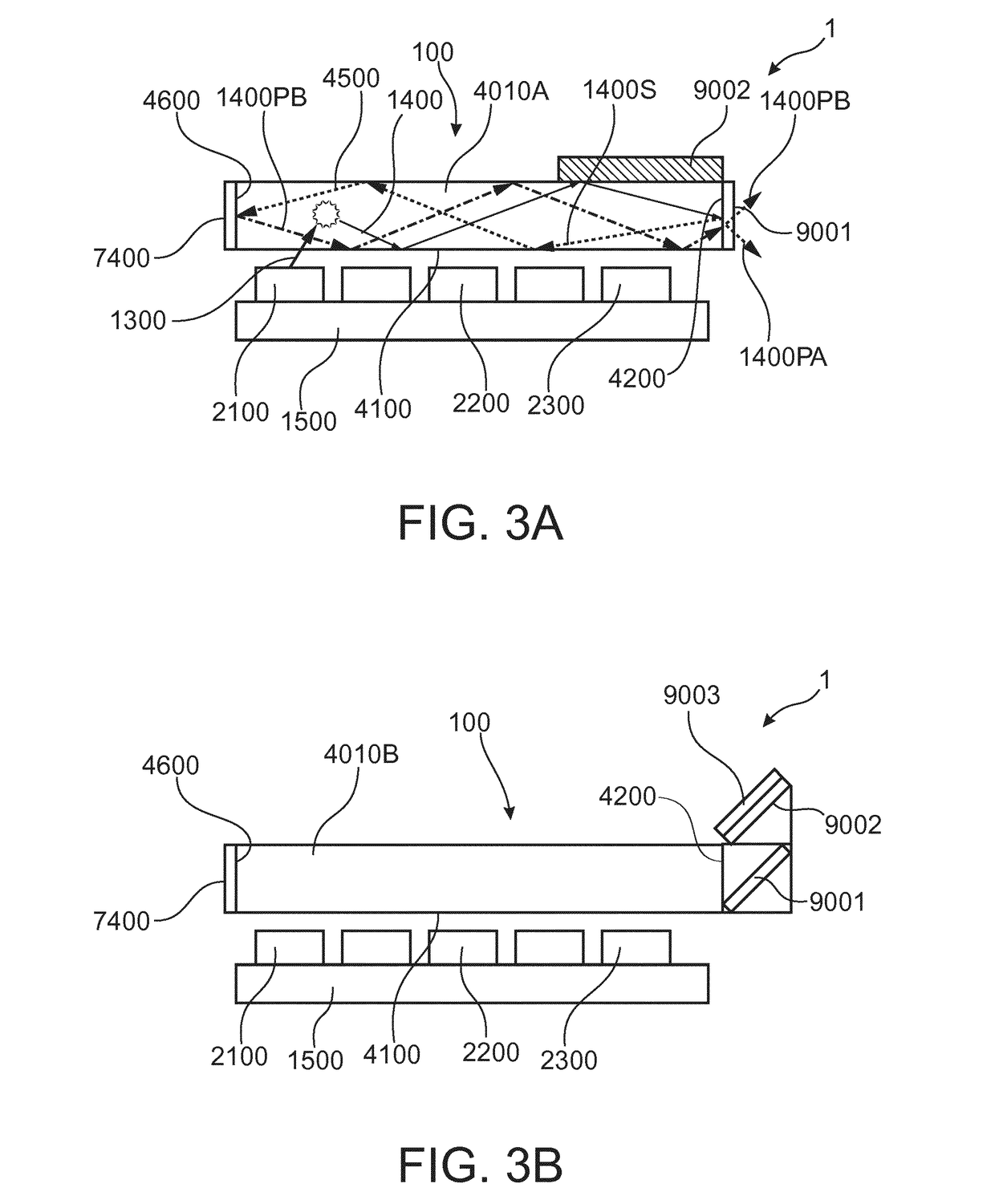Luminescence concentrator with increased efficiency
a concentrator and efficiency technology, applied in the field ofluminescent concentrators, can solve problems such as increasing costs, and achieve the effects of increasing efficiency, increasing costs, and increasing concentrator efficiency
- Summary
- Abstract
- Description
- Claims
- Application Information
AI Technical Summary
Benefits of technology
Problems solved by technology
Method used
Image
Examples
Embodiment Construction
[0039]As illustrated in the figures, the sizes of layers, elements and regions are exaggerated for illustrative purposes and, thus, are provided to illustrate the general structures of embodiments of the present invention. Like reference numerals refer to like elements throughout, such that e.g. a light emitting device according to the invention is generally denoted 1, whereas different specific embodiments thereof are denoted by adding 01, 02, 03 and so forth to the general reference numeral. With regard to FIGS. 1 to 4 showing a number of features and elements which may be added to any one of the embodiments of a light emitting device according to the invention as set forth further below, generally “00” has been added to all elements except those specific to one of these Figures.
[0040]The present invention will now be described more fully hereinafter with reference to the accompanying drawings, in which currently preferred embodiments of the invention are shown. This invention may...
PUM
 Login to View More
Login to View More Abstract
Description
Claims
Application Information
 Login to View More
Login to View More - R&D
- Intellectual Property
- Life Sciences
- Materials
- Tech Scout
- Unparalleled Data Quality
- Higher Quality Content
- 60% Fewer Hallucinations
Browse by: Latest US Patents, China's latest patents, Technical Efficacy Thesaurus, Application Domain, Technology Topic, Popular Technical Reports.
© 2025 PatSnap. All rights reserved.Legal|Privacy policy|Modern Slavery Act Transparency Statement|Sitemap|About US| Contact US: help@patsnap.com



